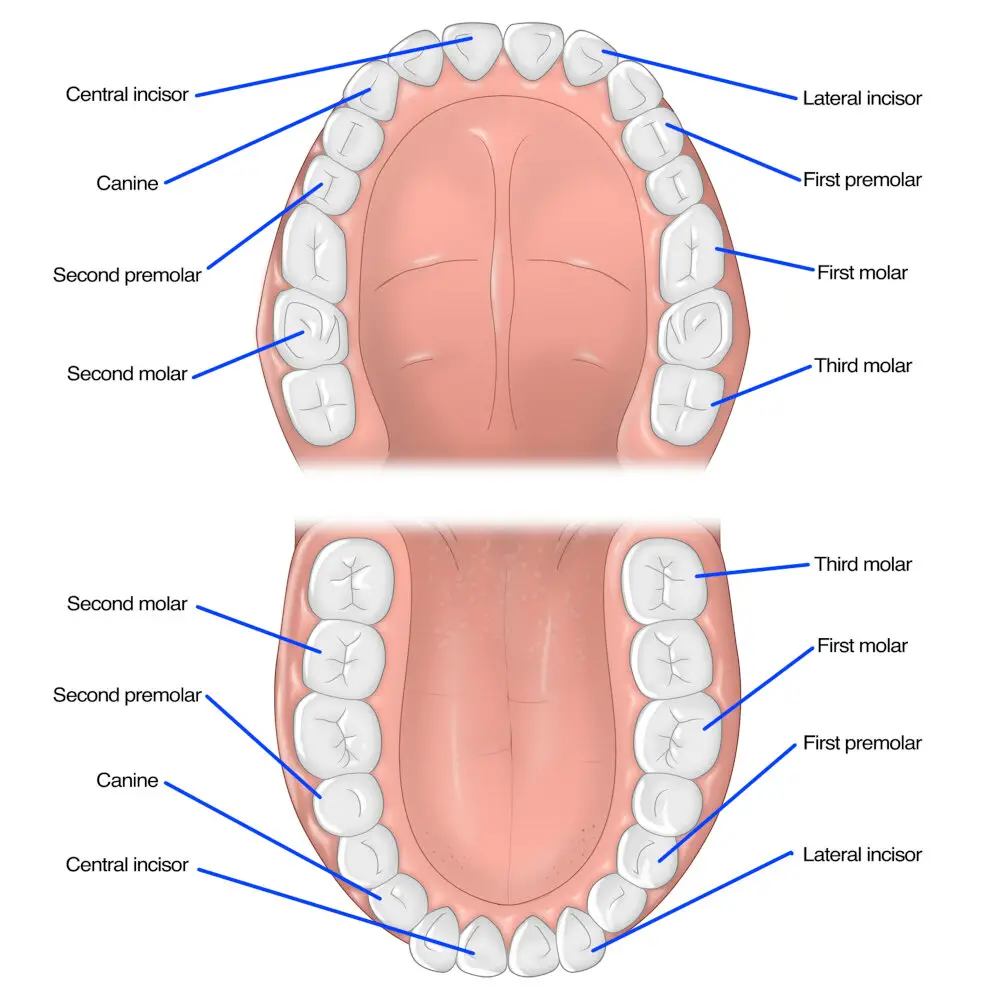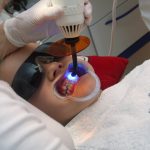Why Wisdom Teeth Removal Can Leave You Feeling Loopy: Understanding the Effects of Anesthesia

Wisdom teeth are the third molars located at the back of the mouth, and they usually emerge in the late teens or early twenties. While some people may not experience any problems with their wisdom teeth, many others may require them to be removed. The procedure is relatively common, but it can leave you feeling a bit loopy due to the effects of anesthesia. Understanding the different types of anesthesia and their effects can help you prepare for the wisdom teeth removal procedure. Anesthesia is a medical technique used to block pain and provide sedation during surgical procedures. There are several types of anesthesia, including local, general, and sedation anesthesia. Local anesthesia numbs the area around the wisdom teeth, and it is typically used for less invasive procedures. General anesthesia involves putting the patient into a deep sleep, and it is usually used for more complex procedures. Sedation anesthesia is a type of anesthesia that produces a relaxed, drowsy state, and it is often used for wisdom teeth removal. The type of anesthesia used for wisdom teeth removal will depend on various factors, such as the patient’s medical history, the complexity of the procedure, and the patient’s preference.
Wisdom teeth, also known as third molars, are the last set of teeth to erupt in the back of the mouth, usually between the ages of 17 and 25. These teeth were once necessary for our ancestors to chew tough foods, but now they are often unnecessary and can cause problems. Due to limited space in the jaw, wisdom teeth can become impacted, meaning they do not have enough room to grow properly. This can lead to pain, infection, and damage to adjacent teeth. In some cases, wisdom teeth can even cause cysts or tumors. Therefore, many dentists recommend the removal of wisdom teeth to prevent these potential issues.
Anesthesia is the use of medication to block pain and discomfort during dental procedures. It is commonly used during wisdom teeth removal, as this procedure can be particularly painful and anxiety-inducing for patients. There are several types of anesthesia, including local anesthesia, which numbs only the area being worked on, and general anesthesia, which induces a temporary loss of consciousness. The purpose of anesthesia in dental procedures is to ensure patient comfort and safety, as well as to facilitate the dentist’s ability to perform the necessary work without interruption or resistance from the patient. However, anesthesia can also have side effects, such as dizziness, nausea, and confusion, which can leave patients feeling loopy and disoriented after the procedure.
Types of Anesthesia Used in Wisdom Teeth Removal

Wisdom teeth removal is a common procedure that can leave patients feeling loopy and disoriented. The anesthesia used during the surgery is a major factor in how patients feel afterward. There are two main types of anesthesia used in wisdom teeth removal: local anesthesia and general anesthesia. Local anesthesia involves numbing the area around the wisdom teeth so that the patient does not feel any pain during the procedure. This type of anesthesia is typically used for simple wisdom teeth removals where the teeth have already erupted from the gum line. General anesthesia, on the other hand, involves putting the patient to sleep during the procedure. This type of anesthesia is typically used for more complex wisdom teeth removals where the teeth are impacted or have not yet erupted from the gum line. Under general anesthesia, the patient is completely unconscious and does not feel any pain or discomfort during the procedure. However, the effects of general anesthesia can last for several hours after the surgery, leaving patients feeling groggy and disoriented. It is important for patients to discuss their options with their dentist or oral surgeon to determine which type of anesthesia is best for their specific situation.
Local anesthesia is a type of anesthesia that is commonly used in dental procedures, including the removal of wisdom teeth. It works by numbing a specific area of the body, so the patient doesn’t feel any pain. A local anesthetic is typically administered through a needle, and the effects can last for several hours. Unlike general anesthesia, which puts the patient to sleep, local anesthesia allows the patient to remain awake during the procedure. However, it’s not uncommon for patients to experience some level of anxiety or discomfort during the procedure, even with the use of local anesthesia. In some cases, a sedative may be used in conjunction with the local anesthetic to help the patient relax. Overall, local anesthesia is a safe and effective way to manage pain during dental procedures, but it’s important to discuss any concerns with your dentist or oral surgeon before the procedure.
Nitrous oxide, also known as laughing gas, is a colorless and odorless gas that has been used as an anesthetic agent for over a century. It works by relaxing the patient’s nervous system, reducing anxiety and inducing a sense of euphoria. Nitrous oxide is often used in combination with other anesthetic agents to provide pain relief during minor surgical procedures, such as wisdom teeth removal. Although it is generally considered safe when used correctly, nitrous oxide can cause dizziness, nausea, and other side effects in some patients. Additionally, prolonged exposure to high doses of nitrous oxide can lead to serious health problems, including nerve damage and vitamin B12 deficiency. Therefore, it is important for patients to discuss the risks and benefits of nitrous oxide with their healthcare provider before undergoing any type of anesthesia.
IV sedation, also known as intravenous sedation, is a type of anesthesia commonly used during wisdom teeth removal procedures to help patients relax and remain comfortable during the surgery. This type of sedation is administered through a small needle inserted into a vein, allowing the medication to quickly and efficiently enter the bloodstream. Patients who receive IV sedation may feel drowsy or even fall asleep during the procedure, but they can still respond to verbal commands from the dental team. This form of anesthesia is considered safe and effective for most healthy patients, but it’s important to discuss any concerns or medical conditions with your dentist or oral surgeon before the procedure. Overall, IV sedation can help alleviate anxiety and discomfort during wisdom teeth removal, making the experience less stressful and more manageable for patients.
General anesthesia is a medical technique used to induce a reversible state of unconsciousness in a patient. This is typically done through the administration of intravenous drugs or inhalation agents that depress the central nervous system and cause the patient to lose consciousness. During this state, the patient is unable to sense pain or respond to external stimuli, allowing the surgeon to perform invasive procedures without causing discomfort. While general anesthesia is generally safe, it can carry risks and side effects such as nausea, vomiting, and respiratory depression. Therefore, it should only be administered by a trained medical professional in a controlled setting.
How Anesthesia Works

Anesthesia is a medical procedure that induces a temporary loss of sensation or consciousness in a patient to alleviate pain during surgery. There are three main types of anesthesia: general, regional, and local. General anesthesia is the most common type and involves the administration of drugs that cause the patient to become unconscious and unresponsive. Regional anesthesia involves the injection of drugs into a specific area of the body, such as the spinal cord, to numb the nerves and prevent pain in that area. Local anesthesia involves the injection of drugs to numb a small area of the body, such as a tooth or a finger. Anesthesia works by disrupting the normal functioning of the nervous system. The drugs used in anesthesia target specific receptors in the brain and spinal cord, blocking the transmission of pain signals to the brain. They also affect other neurotransmitters, such as those responsible for consciousness and memory, causing the patient to lose awareness and memory of the surgery. Anesthesia can have side effects, such as nausea, vomiting, and confusion, which are usually temporary and resolve on their own. However, in rare cases, anesthesia can cause more serious complications, such as allergic reactions, respiratory problems, and cardiovascular complications. It is important for patients to inform their doctors of any medical conditions or medications they are taking that may increase their risk of complications.
Anesthesia is a medical technique used to induce a temporary loss of sensation or consciousness during surgical procedures. There are several types of anesthesia, each affecting the body in different ways. Local anesthesia is typically used for minor procedures and only numbs the specific area where the surgery is taking place. Regional anesthesia blocks pain in a larger area of the body, such as an entire limb, while spinal and epidural anesthesia affect the lower half of the body. General anesthesia, which is commonly used during wisdom teeth removal, causes a loss of consciousness and affects the entire body. The type of anesthesia used depends on the procedure being performed and the patient’s medical history. It is important for patients to understand the potential risks and side effects of anesthesia before undergoing any surgical procedure.
Anesthesia is a medical procedure that is commonly used to numb pain during surgical operations. There are three types of anesthesia: general, regional, and local. General anesthesia is the most potent type, as it affects the entire body and causes a complete loss of consciousness, memory, and pain perception. Regional anesthesia is used to numb a specific part of the body, such as the legs or arms, and may cause some loss of sensation but does not affect consciousness. Local anesthesia is applied topically to a small area of the body and only numbs that specific area, with no effect on consciousness or memory. The type of anesthesia used will depend on the type of surgery being performed and the patient’s medical history.
Common Side Effects of Anesthesia

Anesthesia is a medical practice used to induce temporary loss of sensation or consciousness in a patient during a surgical procedure. Although anesthesia is a safe and effective way to manage pain and anxiety during surgery, it can also cause some common side effects. The most common side effects of anesthesia include nausea, vomiting, dizziness, and confusion. These side effects are usually temporary and resolve themselves within a few hours after the surgery. However, some patients may experience more severe side effects such as allergic reactions, breathing difficulties, and nerve damage. It is important to discuss any concerns with your anesthesiologist prior to the procedure. Nausea and vomiting are the most common side effects of anesthesia. These symptoms are caused by the anesthesia medications and can occur during or after the surgical procedure. Dizziness and confusion are also common side effects of anesthesia and can be caused by the changes in blood pressure and oxygen levels during surgery. These symptoms usually resolve themselves within a few hours after the procedure. However, patients who experience more severe side effects such as an allergic reaction or breathing difficulties may require additional medical attention. It is important to discuss any concerns about anesthesia with your anesthesiologist prior to the procedure to ensure the safest possible outcome.
Nausea and vomiting are common side effects of general anesthesia and can occur after wisdom teeth removal. These unpleasant symptoms are caused by the anesthesia’s effect on the body’s nervous system and digestive system. The brain’s control of the digestive system is temporarily impaired, leading to an upset stomach and the urge to vomit. While these symptoms can be uncomfortable, they usually subside within a few hours or days. Patients can take medication or follow certain dietary restrictions to alleviate these symptoms. It is important to inform the healthcare provider if nausea and vomiting persist or become severe.
Dizziness and disorientation are common symptoms that patients may experience after undergoing wisdom teeth removal under anesthesia. These sensations can be attributed to the effects of the anesthesia on the body, such as the loss of consciousness and reduced blood flow. Additionally, the trauma to the mouth and jaw during the surgical procedure can also cause dizziness and disorientation. It is important for patients to rest and avoid any strenuous activity during the recovery period to allow their body to adjust to the effects of the anesthesia and heal properly. It is also recommended to follow post-operative care instructions provided by the dentist or oral surgeon to ensure a smooth recovery process.
Dry mouth and sore throat are common side effects of anesthesia after wisdom teeth removal. Anesthesia can cause temporary damage to the nerves that regulate saliva production, leading to a dry mouth. This condition can be uncomfortable and can make it difficult to swallow or speak. Additionally, the insertion of the breathing tube during surgery can irritate the throat, causing a sore throat. While these side effects are typically temporary and should subside within a few days, patients can take steps to alleviate the discomfort. Drinking plenty of water, sucking on ice chips, and using a humidifier can help to soothe dry mouth and sore throat symptoms.
Headache and muscle pain are common side effects that can occur after receiving anesthesia during wisdom teeth removal. These symptoms often occur due to the medication’s effects on the central nervous system and can range from mild to severe. Headache pain can be felt in various areas of the head, including the temples, forehead, and behind the eyes. Muscle pain can affect the neck, shoulders, and back, and can make it difficult to move or perform daily activities. While these symptoms can be unpleasant, they typically resolve on their own within a few days as the body recovers from the anesthesia.
Recovery from Anesthesia

After undergoing a surgical procedure, the recovery from anesthesia is an essential aspect of the healing process. Anesthesia is a medical treatment that induces a temporary loss of sensation, which is necessary for a successful surgery. Patients may experience varying degrees of anesthesia, depending on the type of surgery and the medication used. The recovery process from anesthesia usually involves the patient waking up in the recovery room, where medical staff will monitor vital signs and ensure the patient is stable. In most cases, patients may experience dizziness, nausea, and confusion, which are common side effects of anesthesia. Medical staff will administer medication to alleviate these symptoms, and patients are advised to take it easy and avoid strenuous activities for at least 24 hours after surgery. The duration of the recovery process depends on the type of surgery and the patient’s overall health, but most patients can resume their normal activities within a few days. The recovery process from anesthesia is crucial, as it allows patients to heal and regain their strength after surgery. It is essential to follow all post-surgery instructions from medical staff, including taking medication and avoiding certain foods and drinks. Patients should also monitor their symptoms and contact their healthcare provider if they experience any complications. While the recovery process can be challenging, it is a necessary part of the healing process, and patients should take the time they need to recover fully. With proper care and attention, patients can return to their normal activities and enjoy a full recovery from surgery.
Managing the common side effects of wisdom teeth removal can be a daunting task, but with the right tips, it can be easily managed. Some of the most common side effects of wisdom teeth removal include swelling, pain, bleeding, and nausea. To manage these side effects, it is important to follow the post-operative instructions carefully, including taking any prescribed medication as directed, applying ice to the affected area to reduce swelling, and avoiding solid foods for the first few days. Additionally, it is important to rest and avoid strenuous activity for the first few days to allow the body to heal properly. With these tips, managing the common side effects of wisdom teeth removal can be a breeze, allowing for a smooth and successful recovery.
After undergoing anesthesia for wisdom teeth removal, it is crucial to follow the guidelines provided by your dentist or surgeon to ensure a smooth recovery. It is common to experience grogginess, dizziness, and nausea immediately after the procedure, so it is recommended to have someone accompany you home. Rest is essential, and it is advisable to avoid strenuous activities, driving, and operating machinery for at least 24 hours. You should also avoid smoking, drinking alcohol, and eating hard or crunchy foods for a few days to allow the surgical site to heal properly. If you experience persistent pain, bleeding, or swelling, do not hesitate to contact your healthcare provider for further guidance. By following these guidelines, you can ensure a comfortable and speedy recovery after anesthesia.
Anesthesia is a medical technique used to numb or sedate a patient during surgery, dental procedures or other medical interventions. Depending on the type of anesthesia administered, it can affect various body functions such as brain activity, heart rate, blood pressure, and breathing. General anesthesia, the most common type, works by inducing a state of unconsciousness, allowing the patient to undergo surgery without feeling pain or discomfort. However, it can also cause side effects such as confusion, dizziness, nausea, and fatigue. Regional anesthesia, such as epidurals, blocks pain in specific areas of the body, but can also cause numbness, weakness, and headaches. Local anesthesia is used for minor procedures and only numbs a small area, with few side effects. It is important to understand the effects of anesthesia and discuss any concerns with your healthcare provider before undergoing any medical procedures.
Following postoperative instructions is crucial for a smooth recovery after wisdom teeth removal. These instructions are designed to help patients manage pain, reduce swelling, prevent infection, and ensure that the healing process goes smoothly. Failure to comply with these instructions can result in complications such as dry socket, bleeding, and delayed healing. It is important to follow the instructions provided by the oral surgeon or dentist carefully, including taking medications as prescribed, avoiding certain foods and activities, and attending follow-up appointments. By doing so, patients can minimize discomfort and ensure a successful recovery.
Conclusion

In conclusion, undergoing wisdom teeth removal can be a daunting experience for many, especially when it comes to the effects of anesthesia. While it can leave you feeling loopy and disoriented, it’s important to understand that these are common side effects of the medication. Anesthesia is a powerful tool that allows for painless procedures and is administered by trained professionals who prioritize your safety and comfort. However, it’s essential to follow all pre and post-operative instructions provided by your dentist or oral surgeon to ensure a smooth recovery. With the right care and attention, the effects of anesthesia can be minimized, and you can return to feeling like yourself in no time.







